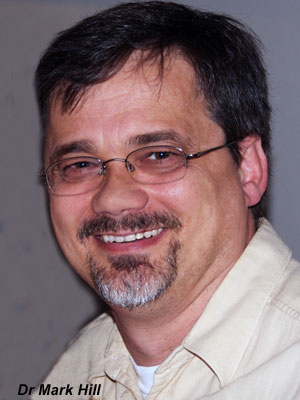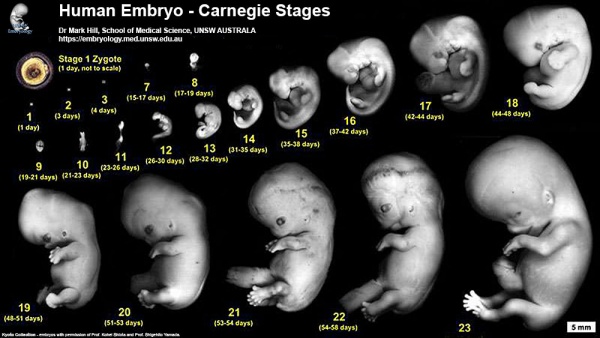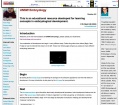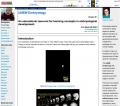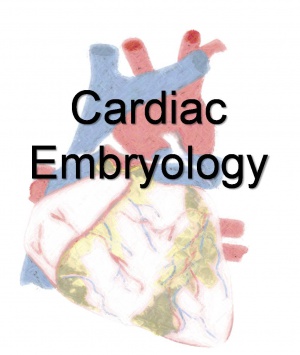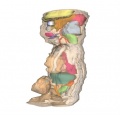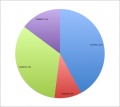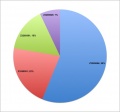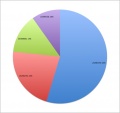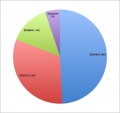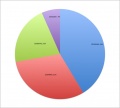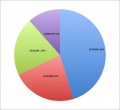Anatomy and Embryology Goettingen - 2013 Seminar: Difference between revisions
| Line 198: | Line 198: | ||
==Science Small Class== | ==Science Small Class== | ||
[[File:Medicine_computer_lab.jpg|400px]] | [[File:Medicine_computer_lab.jpg|400px]] | ||
[[File:Medicine computer lab.jpg|thumb|Medicine small class computer lab]] | |||
* Earlier group projects in the Science courses had been preparing a poster and a final presentation to the class. | |||
* The online projects also require presentations during their preparation and include a peer assessment process. | |||
{| class="wikitable collapsible collapsed" | |||
! Project Pedagogy | |||
|- | |||
| colspan="2"|[[File:Mark_Hill.jpg|50px]] | |||
These projects extend far beyond the original "research poster concept". It requires ongoing participation from both the teacher and the student, if you are not prepared to have an ongoing contribution, do not even consider setting this type of assessment. | |||
|- | |||
| | |||
'''Students''' | |||
* Groups work independently throughout the semester on a specific topic the group has selected within the general topic set by the teacher. | |||
* Groups are assigned randomly by the teacher, do not want "friends" and "non-friends" groups. | |||
* Online work consists of the "project page" and the "discussion page" where student online interaction occurs. | |||
* Face-to-face time is allowed each week in the last 10 minutes of practical classes. | |||
* Projects are also presented to the class at a "work in progress" phase. | |||
* Each student carries out a "online written assessment" of all other projects late in the semester, when groups are near completion. | |||
* Groups then collate and use these "online written assessments" to edit their own project. | |||
| valign=top| | |||
'''Teacher''' | |||
* Designs specific assessment criteria. | |||
* Designs the general topic and allocates groups. | |||
* Provides handouts and brief tutorials each week in practical class time on: basic editing, copyright/plagiarism , reference sources and referencing and uploading images. | |||
* Provides regular in-class advice, online comments and email support to queries and feedback. | |||
* Analyses project "edit history" and "discussion" comments to identify individual students not contributing to the project. | |||
* Analyses the final submitted project providing specific online feedback. | |||
|} | |||
* Students also submit '''individual assessments''' each week online based upon the practical class they had just completed. | |||
* Listed below are the final group projects (4-5 students/group) submitted between 2009 and 2011 in embryology (ANAT2341) and cell biology (ANAT3231) courses. | |||
====Embryology Group Projects==== | |||
{| class="wikitable collapsible collapsed" | |||
! Project Topics | |||
|- | |||
| colspan="2"|[[File:Mark_Hill.jpg|50px]] How do you select a topic? | |||
These project topics supplement content covered in lectures and practicals. Student can apply their understanding of concepts in development to topics that show relevance of embryology research to both basic sciences and clinical medicine. | |||
|- | |||
| | |||
* Animal Models - Have been use historically to understand human development. More recently they have been used to understand human disease mechanisms and the potential application of stem cells. The students learn to identify the common features of development in different species as well as the differences between species. | |||
* Diagnostic Techniques - Applies an understanding of the tools available to understand abnormal development. Focussing on how the tools work, what they measure and what they show. The students learn to firstly identify features of normal development, before they can understand how (and why) abnormal development can be detected. | |||
* Abnormalities - These are a range of (human) developmental abnormalities with a range of developmental origins and affecting different systems. An understanding of normal development, from the course, is required to interpret specific abnormalities. The students learn to identify the main origins of abnormalities (genetic, environmental and unknown), the history of our understanding and how research has progressed in the topic area. | |||
|} | |||
* '''2009''' - Animal Models: [[2009_Group_Project_1|Rabbit]] | [[2009_Group_Project_2|Fly]] | [[2009_Group_Project_3|Zebrafish]] | [[2009_Group_Project_4|Mouse]] | [[2009_Group_Project_5|Project 5 - Frog]] | [[Animal_Development|Related page - Animal Development]] | |||
* '''2010''' - Diagnostic Techniques: [[2010_Group_Project_1|Ultrasound]] | [[2010_Group_Project_2|Chorionic villus sampling]] | [[2010_Group_Project_3|Amniocentesis]] | [[2010_Group_Project_4|Percutaneous Umbilical Cord Blood Sampling]] | [[2010_Group_Project_5|Fetal Fibronectin]] | [[2010_Group_Project_6|Maternal serum alpha-fetoprotein]] | [[Prenatal_Diagnosis|Related page - Prenatal Diagnosis]] | |||
* '''2011''' - Abnormalities: [[2011_Group_Project_1|Turner Syndrome]] | [[2011_Group_Project_2|DiGeorge Syndrome]] | [[2011_Group_Project_3|Klinefelter's Syndrome]] | [[2011_Group_Project_4|Huntington's Disease]] | [[2011_Group_Project_5|Fragile X Syndrome]] | [[2011_Group_Project_6|Tetralogy of Fallot]] | [[2011_Group_Project_7|Angelman Syndrome]] | [[2011_Group_Project_8|Friedreich's Ataxia]] | [[2011_Group_Project_9|Williams-Beuren Syndrome]] | [[2011_Group_Project_10|Duchenne Muscular Dystrolphy]] | [[2011_Group_Project_11|Cleft Palate and Lip]] | [[ANAT2341_2011_Students#Student_Group_Projects|Student Group Projects]] | |||
{| class="wikitable collapsible collapsed" | |||
! Student Contributions | |||
|- | |||
| colspan="2"|[[File:Mark_Hill.jpg|50px]] The assessment criteria requires "an ongoing contribution", how do you identify this? | |||
All pages track all edits made. Using this "edit history" log student contributions can be logged and quantified. A quick audit of this log (simply pasted into a spreadsheet to sort, count and graph) does not identify directly what has been edited, though this can also be done both by see and comparison of content added/removed. It does identify the "low contributors" to both the project and discussion pages. An intergroup comparison can also identify whether some groups are having problems with the work. | |||
An edit audit carried out early enough in the project process, allows both teacher and student to identify this issue. | |||
An equal edit contribution would be shown by an even distribution of slices in the pie diagrams. | |||
|- | |||
| | |||
'''2011 Embryology Projects''' Student Edits | |||
<gallery> | |||
File:2011_Project_Group_1_edits.jpg|Group 1 | |||
File:2011_Project_Group_2_edits.jpg|Group 2 | |||
File:2011_Project_Group_3_edits.jpg|Group 3 | |||
File:2011_Project_Group_4_edits.jpg|Group 4 | |||
File:2011_Project_Group_5_edits.jpg|Group 5 | |||
File:2011_Project_Group_6_edits.jpg|Group 6 | |||
File:2011_Project_Group_7_edits.jpg|Group 7 | |||
File:2011_Project_Group_8_edits.jpg|Group 8 | |||
File:2011_Project_Group_9_edits.jpg|Group 9 | |||
File:2011_Project_Group_10_edits.jpg|Group 10 | |||
File:2011_Project_Group_11_edits.jpg|Group 11 | |||
File:2011_Project_Group_1-11_edits.jpg|All Groups (1-11) edits | |||
</gallery> | |||
|} | |||
{| class="wikitable collapsible collapsed" | |||
! Peer Assessment | |||
|- | |||
| colspan="2"|[[File:Mark_Hill.jpg|50px]] How do you engage the students in the assessment process? | |||
Students present their project in the class and have a set "soft deadline" for completing the project and at this deadline students stop the work on their own project. An individual assessment item is set where each student looks, using the assessment criteria, at all the other projects. This assessment is pasted on the project discussion page and the students own page. The following week, groups then collate these assessments and have the opportunity to improve their own project based upon these comments. | |||
Note the process also makes the students look at the other projects and see what is "good" and "bad" and use this when they return to work on their own project. | |||
|} | |||
{{Footer}} | |||
[[Category:Education]][[Category:2013]] | [[Category:Education]][[Category:2013]] | ||
Revision as of 05:39, 4 December 2013
Online Embryology for Medicine and Science
6 December 2013 Dept. of Anatomy and Embryology, University of Goettingen Translate page - German
Introduction
This presentation will describe my experiences in developing online embryology teaching for medical (large group) and science (small group) student groups.
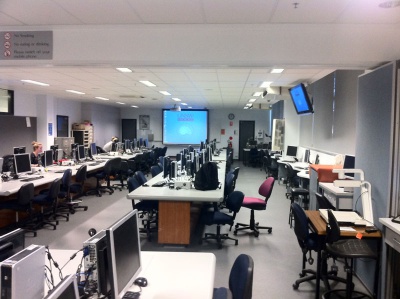
|

|
| Medicine (large computer lab) | Science (small computer lab) |
<mediaplayer width='500' height='450' image="http://php.med.unsw.edu.au/embryology/images/4/4e/Human_blastocyst_day_1-6.jpg">File:Human_blastocyst_day_3-6.mp4</mediaplayer>
|
Embryology Online
| Technology Timeline | |
|---|---|

The changing technology environment we have experienced in the last 50 years, and more recently in the last 20 "internet years". | |
|
|
New Wiki Format 2009
- familiar structure and layout. (the Wiki format)
- easy to print and search. (print this current page)
- resolved student navigation issues. (every page has the same navigation and access to student pages)
- contributions by researchers staff and students. (Researcher Contributions)
- current research easily added and used by students. (Blastocyst Day 3-6 Movie)
| Why Wikis? |
|---|

The Software - Wikipedia had been around for a few years and many students were commonly using it initially as a dictionary rather than encyclopaedia. MediaWiki is the database software which runs this application on the web and is separate from the content hosted in Wikipedia. The Support - MediaWiki is freely available, stable, regularly updated, and has a large group of developers maintaining and making many useful applications (extensions) within this software framework. The Interaction - The format can be used interactively by teacher and student, both can construct, distribute and share knowledge. This can be done easily anytime and anywhere with an internet connection and editing can be restricted to only those designated users and hierarchically within those users. Importantly, an extension allows users access through the familiar UNSW Zpass system. Visibility - You need to see what is being done! The embryology educational material has since its early development been on the internet and available to all. Learning management systems (LMS) are excellent for what they do, manage courses and students. My experience is that students don't generally like LMS and use it only because they have to. Most are LMS are commercial packages ($$) and their content is generally hidden (which can be important for security/copyright etc) and not easily shared. |
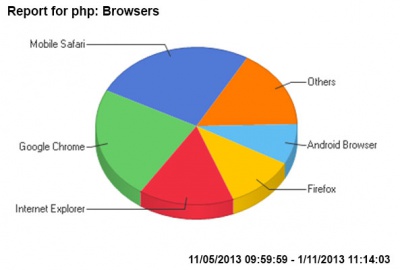
|
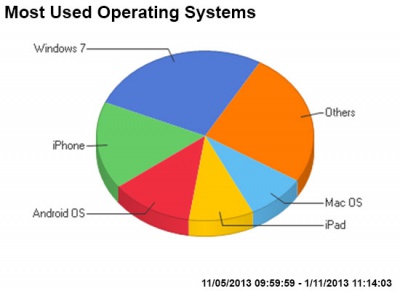
|
| Browser used | Browser operating systems |
Teaching Contact Hours
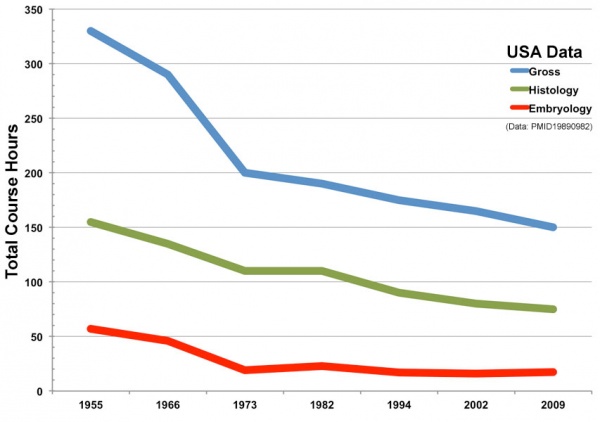
Trends in anatomy disciplines contact teaching hours based on data from USA survey.[1] |
|
| About this graph |
|---|
Reference
University of New South Embryology Contact hours
|
| New Embryology Topics |
|---|
Less contact time, but a growing list of new clinically relevant topics.
|
Medicine Large Class

|

|
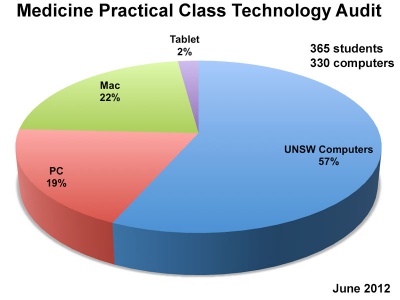
|

|
| Medicine practicals computer use (2012) | Online textbook access (2011) |
Medicine - Independent Learning Projects
The Independent Learning Project (ILP) is intended to provide UNSW medical students with a period of in-depth study that engenders an approach to medicine that is constantly questioning and self-critical. (About ILP)
- 2006 - Carnegie Stage Embryo Animations educational project.
| 2006 ILP Movies | |||||||||||||||||||||||||||
|---|---|---|---|---|---|---|---|---|---|---|---|---|---|---|---|---|---|---|---|---|---|---|---|---|---|---|---|

Shown below are the animations generated from the serial sections of a Human embryo (week 8, Carnegie stage 22). Click the quicktime or Flash lingo to see the rotating animations. Note Flash animations do not play on iPads. | |||||||||||||||||||||||||||
These 3d movies were part of the UNSW Medical degree Independent Learning Project (ILP) prepared by Aashish Kumar (2006). |
- 2009 - Cardiac Embryology educational project. (Project Background, Project Discussion)
| 2009 ILP Tutorial | ||||
|---|---|---|---|---|
 Self-directed Learning. Self-directed Learning.
This project was designed to allow students to work through heart development online using modules designed to teach at 3 levels of understanding, using the "traffic light" approach, (green is easiest, red is hardest). Each module through the same timeline and firstly identifies the learning objectives, then how long it will take to complete the module. | ||||
Basic Heart Development Timeline (weeks of development are shown w3 to w7) |
Science Small Class
- Earlier group projects in the Science courses had been preparing a poster and a final presentation to the class.
- The online projects also require presentations during their preparation and include a peer assessment process.
- Students also submit individual assessments each week online based upon the practical class they had just completed.
- Listed below are the final group projects (4-5 students/group) submitted between 2009 and 2011 in embryology (ANAT2341) and cell biology (ANAT3231) courses.
Embryology Group Projects
- 2009 - Animal Models: Rabbit | Fly | Zebrafish | Mouse | Project 5 - Frog | Related page - Animal Development
- 2010 - Diagnostic Techniques: Ultrasound | Chorionic villus sampling | Amniocentesis | Percutaneous Umbilical Cord Blood Sampling | Fetal Fibronectin | Maternal serum alpha-fetoprotein | Related page - Prenatal Diagnosis
- 2011 - Abnormalities: Turner Syndrome | DiGeorge Syndrome | Klinefelter's Syndrome | Huntington's Disease | Fragile X Syndrome | Tetralogy of Fallot | Angelman Syndrome | Friedreich's Ataxia | Williams-Beuren Syndrome | Duchenne Muscular Dystrolphy | Cleft Palate and Lip | Student Group Projects
Cite this page: Hill, M.A. (2024, June 1) Embryology Anatomy and Embryology Goettingen - 2013 Seminar. Retrieved from https://embryology.med.unsw.edu.au/embryology/index.php/Anatomy_and_Embryology_Goettingen_-_2013_Seminar
- © Dr Mark Hill 2024, UNSW Embryology ISBN: 978 0 7334 2609 4 - UNSW CRICOS Provider Code No. 00098G
